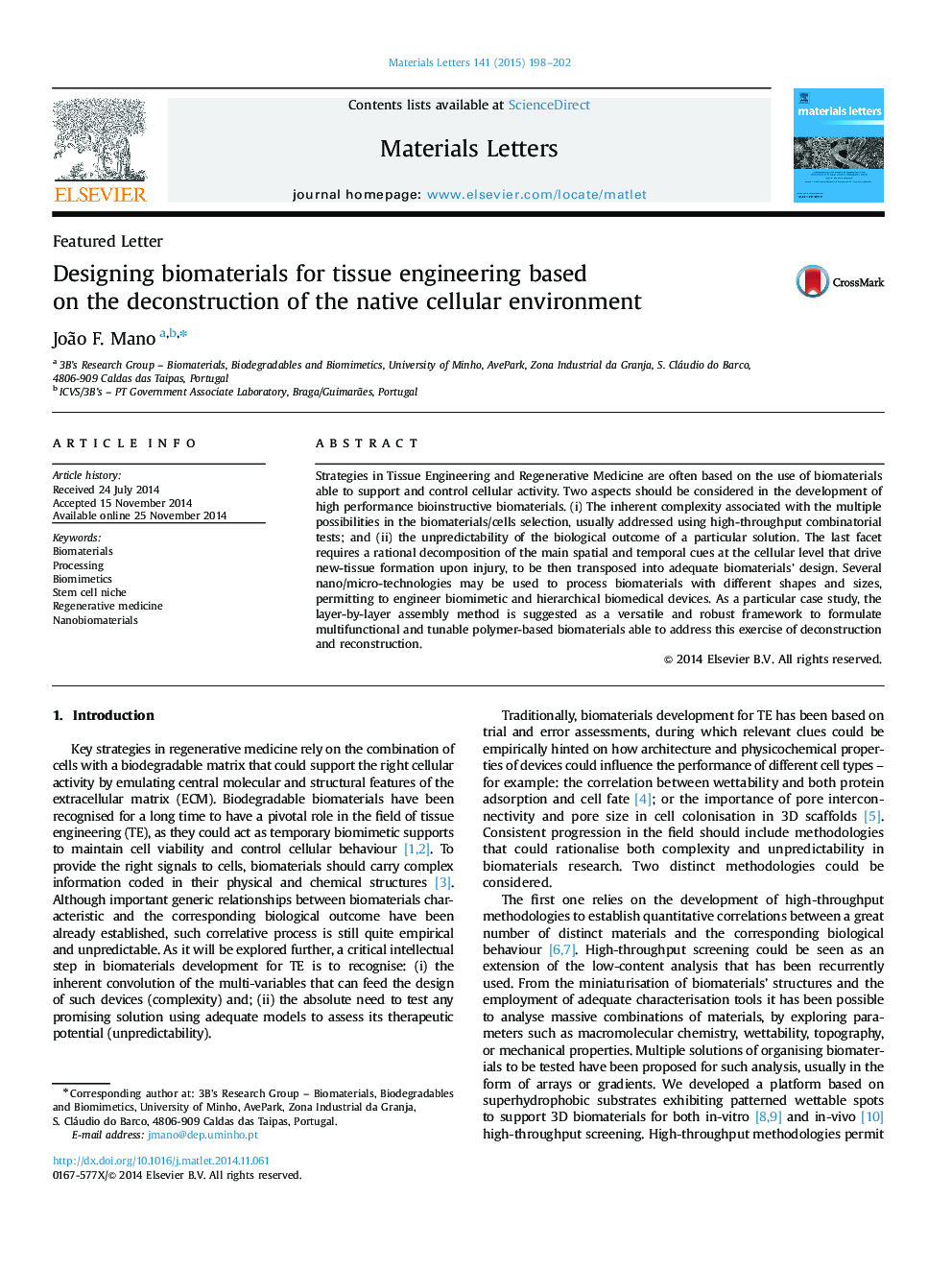| کد مقاله | کد نشریه | سال انتشار | مقاله انگلیسی | نسخه تمام متن |
|---|---|---|---|---|
| 1643156 | 1517247 | 2015 | 5 صفحه PDF | دانلود رایگان |

• Complexity and unpredictability should be recognised in biomaterials development.
• Cues occurring at the cellular level should be transposed in biomaterials design.
• Distinct processing routes may be used covering distinct dimensional and length scales.
• Layer-by-layer is a versatile toolbox to formulate nanostructured biomaterials.
Strategies in Tissue Engineering and Regenerative Medicine are often based on the use of biomaterials able to support and control cellular activity. Two aspects should be considered in the development of high performance bioinstructive biomaterials. (i) The inherent complexity associated with the multiple possibilities in the biomaterials/cells selection, usually addressed using high-throughput combinatorial tests; and (ii) the unpredictability of the biological outcome of a particular solution. The last facet requires a rational decomposition of the main spatial and temporal cues at the cellular level that drive new-tissue formation upon injury, to be then transposed into adequate biomaterials’ design. Several nano/micro-technologies may be used to process biomaterials with different shapes and sizes, permitting to engineer biomimetic and hierarchical biomedical devices. As a particular case study, the layer-by-layer assembly method is suggested as a versatile and robust framework to formulate multifunctional and tunable polymer-based biomaterials able to address this exercise of deconstruction and reconstruction.
Journal: Materials Letters - Volume 141, 15 February 2015, Pages 198–202